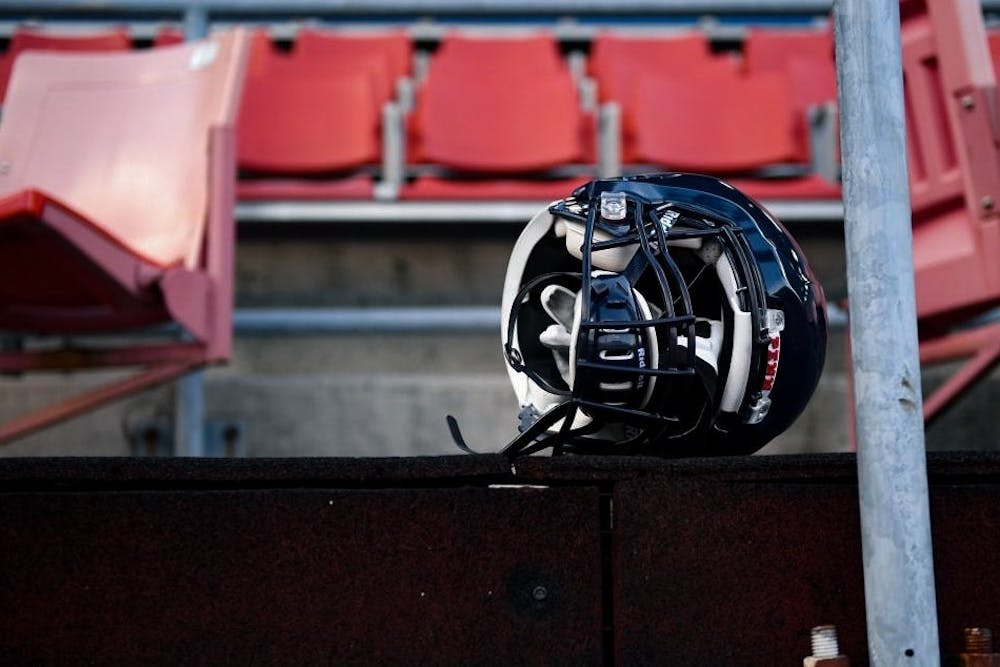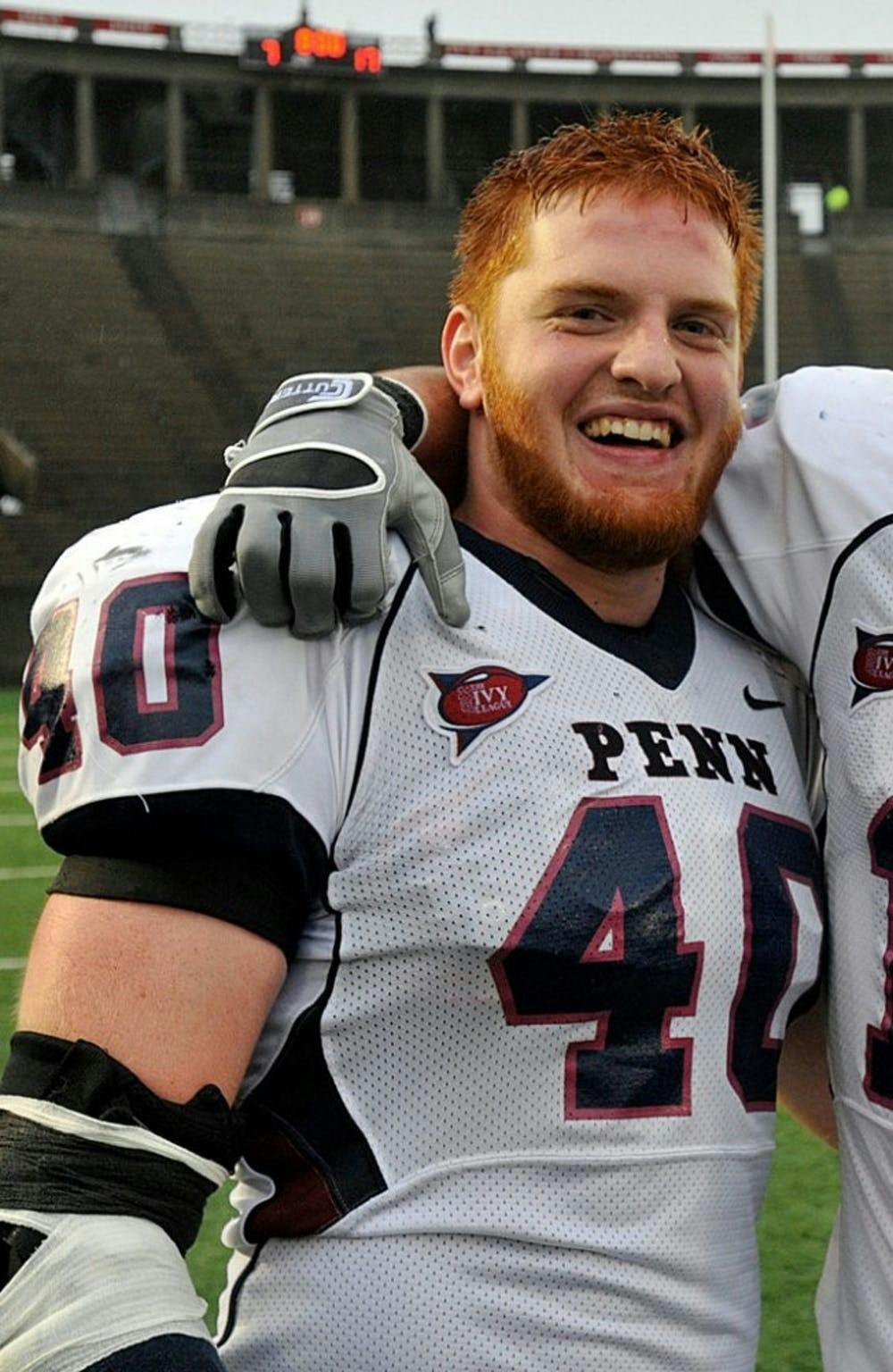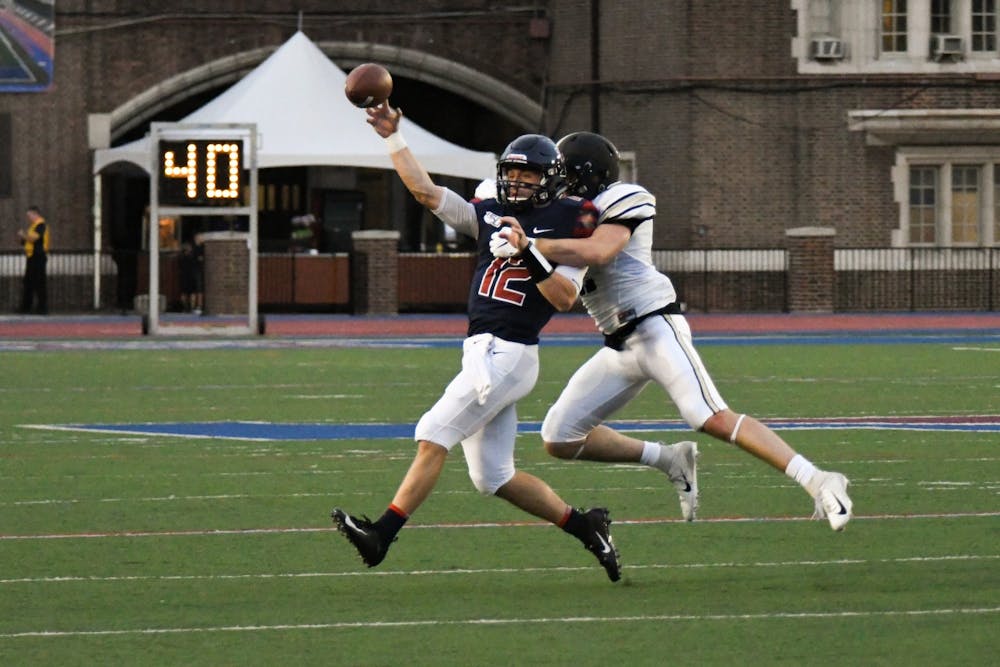
Ten years ago last Sunday, an unforeseeable tragedy rocked the Penn community: the death by suicide of junior lineman Owen Thomas. An autopsy determined that Thomas suffered from chronic traumatic encephalopathy (CTE), a brain disease caused by repeated head injuries that is increasingly common among football players.
How can we prevent such unnecessary deaths from occurring? Could the simplest answer be to remove the root of the problem, namely football overall?
We need to think critically about the benefits and drawbacks of both options: allowing the game to continue as is, injuries and all, while examining the consequences of eliminating the program altogether. There is no one solution that will please everyone, but continuing the dialogue is key to keeping this issue relevant.
I was born into a football family. My dad has been a high school coach for over 30 years. When I think of all the players I’ve gotten to know through the years, I can only wonder how many of them have gone through something similar to Owen Thomas and may now be living with CTE, however mild a case.
Although I do not play football myself, imagining a world without the sport is impossible. So if it remains infeasible to completely abolish football, we need to evaluate how we can keep a case like Owen Thomas from happening again.

Owen Thomas
There comes a point where the long-lasting consequences of players ramming themselves into one another at full force becomes too much to ignore.
Football may be the furthest thing from your mind right now. Or perhaps the recent NFL draft has brought you back into the world of the gridiron. Either way, isolation and quarantine have given us time to reflect on our relationship with the game.
The attitude towards head injuries in football has shifted significantly in recent years, with increasing regulation put in place to protect players from egregious hits or dirty plays. Across the collegiate and professional world, new helmet designs have been introduced with the purpose of further protection of the skull.
In the Ivy League, coaches unanimously voted in 2016 to ban tackling from regular season football practices. And prior to the 2018 season, the league instituted a rule which moved the kickoff and touchback lines in an effort to limit the head-to-head collisions often seen on kick returns. The measure proved successful, with the season seeing a 69% reduction in concussions suffered from kickoffs, so it may be time for a similar rule to go into effect nationwide.
Boston University’s CTE Center recently published a study claiming that just 2.6 years of playing football doubles a given player’s risk of developing CTE. Since many college athletes have been playing tackle for a decade or more, the compounded risk they face is significant.
A more recent high-profile case involved the death of Tyler Hilinski, a former quarterback for Washington State. Hilinski was only 21 when he died by suicide in January 2018 and was posthumously diagnosed with stage one CTE. When thinking of the thousands of athletes who effectively put their lives on the line for this game, the math is grim.

Penn sprint football senior quarterback Eddie Jenkins (left)
Arguably more at risk are sprint football players. Restricted by a weight limit of 178 pounds, these players have lighter frames than their traditional football counterparts. So while the force of tackles in sprint may not be as great, players often do not have much extra weight to protect themselves.
Right on campus you can find athletes whose lives have been impacted by concussions they have suffered while on Penn’s teams. These are players whose athletic careers have been cut short and must come to terms with permanent damage from their injuries.
Perhaps the story of Owen Thomas was an anomaly, one case a decade ago where other circumstances contributed to things going horribly wrong. Or possibly the problem isn’t football, since Penn has seen more recent tragic deaths in other sports programs as well. Maybe it’s a problem embedded in athletics and how the topic of mental health is discussed — or not discussed.
It’s undeniable that injuries are part of any sport, and everyone loves a good recovery story when a player comes back from a devastating setback. But there won’t be a comeback for players like Owen Thomas, Tyler Hilinski, and countless others whose football careers have been permanently cut short.
How many more lives are we willing to risk before we reform the game?

WILL DiGRANDE is a College junior from Warren, N.J. and a Senior Sports Editor for The Daily Pennsylvanian. He can be reached at digrande@thedp.com.
The Daily Pennsylvanian is an independent, student-run newspaper. Please consider making a donation to support the coverage that shapes the University. Your generosity ensures a future of strong journalism at Penn.
Donate







